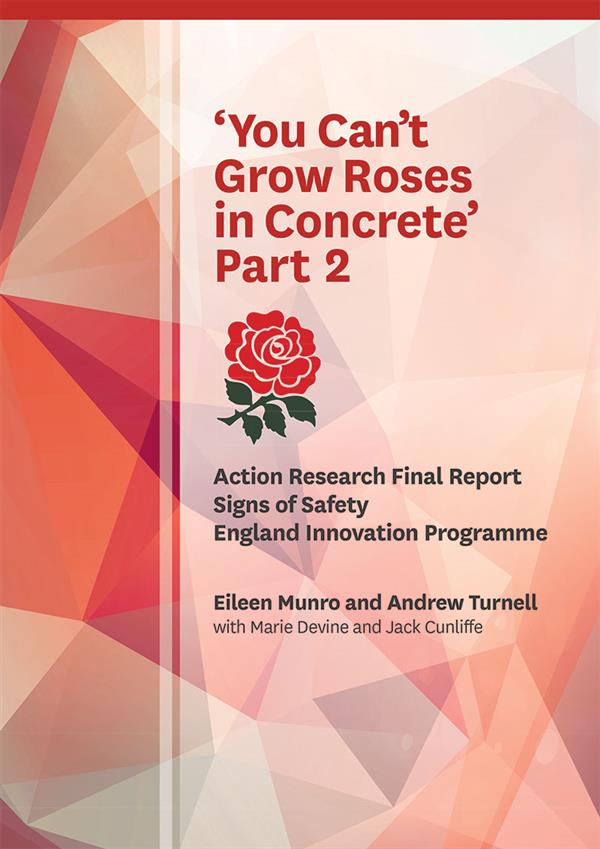Signs of Safety Research
You can't grow roses in concrete Part 2
EIP2 Final Action Research Report
31 Mar 2020
Brief overview – Eileen Munro
 How can similar child protection agencies implement the same Signs of Safety approach and receive assistance from the same trainers and consultants yet show vastly varied progress (and, for some, regress)? This is the question explored in the second report on the England Innovations Programme: 'You can’t grow roses in concrete' Part 2.
How can similar child protection agencies implement the same Signs of Safety approach and receive assistance from the same trainers and consultants yet show vastly varied progress (and, for some, regress)? This is the question explored in the second report on the England Innovations Programme: 'You can’t grow roses in concrete' Part 2.
In all, Munro, Turnell and Murphy Child Protection Consultancy (MTM) received two grants from the UK government to work with ten English local authorities implementing whole system change to support Signs of Safety practice, the first for 18 months work in 2014–16 (EIP1) and the second for two years in 2017–19 (EIP2).
During the five-year period of the work, all the authorities were inspected twice by Ofsted, the national inspection body. Three authorities progressed to the highest rating of ‘outstanding’, four showed some progress, and three either showed no progress or deteriorated to the lowest judgment ‘inadequate’. At one level, the disparities are not surprising: introducing change into complex social systems like child protection agencies will have different effects depending on how the change interacts with other parts of the system. But what other parts of the system are most influential? This report pulls together the evidence on how each authority implemented the sections of the Signs of Safety implementation framework to see whether progress on the implementation predicts progress in Ofsted judgments.
The behaviour of leaders seems to be crucial, especially in demonstrating commitment to the reforms and having close contact with direct work with families. Slowness in aligning administrative processes and IT to the practice caused additional work for front line staff and can be seen as sending mixed messages about the commitment to implementing Signs of Safety completely. Monitoring what was happening and looking for evidence of quality, not just quantity, was challenging in a sector embedded in a compliance-with-process culture. Providing training was possibly the easiest section of the implementation framework but progress was clearly linked to how extensively the authority instigated methods for on-going learning and support. Group supervision was highly valued in those places where it was established as a core, not a peripheral, support.
In EIP2, a new version of the staff survey used the Safety Attitudes Questionnaire developed and extensively researched in aviation and, subsequently, in health. This captures measurement of dimensions of work culture that are associated with the number of mistakes, slips, and poor practice. Between the two surveys carried out, the best performing authorities showed good progress and the moderate performing showed some progress. Only one authority in the weakest group conducted two surveys and that showed deterioration on all dimensions except the recognition of stress.
An independent evaluation is being carried out by a team from Kings College, London and that will explore more of the impact on children, young people and families. It also studies implementation and includes a contrast study of two local authorities using Signs of Safety and two who are not.
Comments
Are you sure you want to delete the comment?
Are you sure you want to approve this comment?
Are you sure you want to reject this comment?
Your comments have been submitted for approval. You will be notified via email when they are approved.
Last updated Wednesday, 5 August 2020 11:33:51 PM